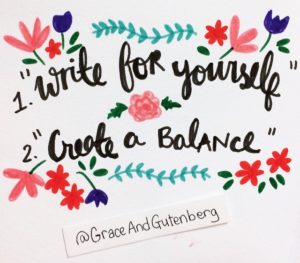I didn’t know anything about razor clams, much less razor clamming, before I met David Berger. I was the event person in charge of one of his book readings and his enthusiasm for the subject, as well as great presentation skills – he came prepared with some awesome visual aids!- soon had us all enthralled with this fascinating bivalve!
David has been a contributor to the food feature, “Northwest Taste,” in the Pacific Magazine, and is a former art critic for the Seattle Times. He is also a recipient of a Metcalf Fellowship for Marine and Environmental Reporting.
His new book, RAZOR CLAMS: BURIED TREASURE OF THE PACIFIC NORTHWEST, is published by University Of Washington Press.
Now, let’s here what David has to say!
1. If you could have been the author of any book that has ever been published, what would it be, and why?
I read Robert Louis Stevenson’s Treasure Island every couple of years, so I guess it’s reasonable to wish I’d written it and had the chops for it.
It’s a great yarn and one of the world’s most popular books. I like stories and insights that have to do with the sea, and young Jim crossing the ocean with pirates and comrades, and having a tide-tossed boat ride in a tiny vessel called a coracle, are quite the watery adventures.
Sometimes people like to be read to as they’re failing in health and preparing to shuck this mortal coil. I wouldn’t mind hearing this tome in that circumstance. We’re all crossing something, one way or another.
2. What do you need around you when you start working on a book?
I need the stars to line up correctly, some space in my life and head, research and papers at hand, and a good amount in my bank account
3. You are forced to condense your book collection down to one small shelf. What six books would you want to always have in your home?
Well now, that’s a tough one. A dictionary, say the Random House Dictionary of the English Language. I like words and language.
Treasure Island, I’ve already said.
Arctic Dreams, by Barry Lopez.
Collected Essays by George Orwell.
My portable field guide to Western mushrooms, All that the Rain Promises and More… .
I like art, too, so The Hokusai Sketch-Books: selections from the Manga.
But OMG that’s leaves out Dostoyevsky, Michael Chabon, Margaret Atwood, One Hundred Years of Solitude, Moby Dick, all the poets and so much more!
4. What one piece of advice would you go back in time to give yourself when you first started your writing career?
 I dunno, not feeling very advisor-ly at the moment.
I dunno, not feeling very advisor-ly at the moment.
Eat more chocolate. Buy more real estate.
5. During the course of your research for the new book, what was the most surprising thing you discovered about the razor clam or about clamming?
One thing that was surprising was how much fun it was to do the research. The number of people who went razor clamming in the 1970s, maybe as much as seven percent of Washington State’s population, was surprising.
And It’s quite astonishing to picture the razor clams on the West Coast all dwelling in their sandy intertidal burrows with hinges facing the surf. Their backs to the pounding waves. “Lined up as orderly as soldiers on parade.” That haunts my imagination every time I think of it.
Be sure to pick up a copy of David’s book from your local bookstore and check out the UW Press website to see if he has an event near you! And stay tuned for next week’s Five Questions With Grace with Eric Andrews-Katz!
























